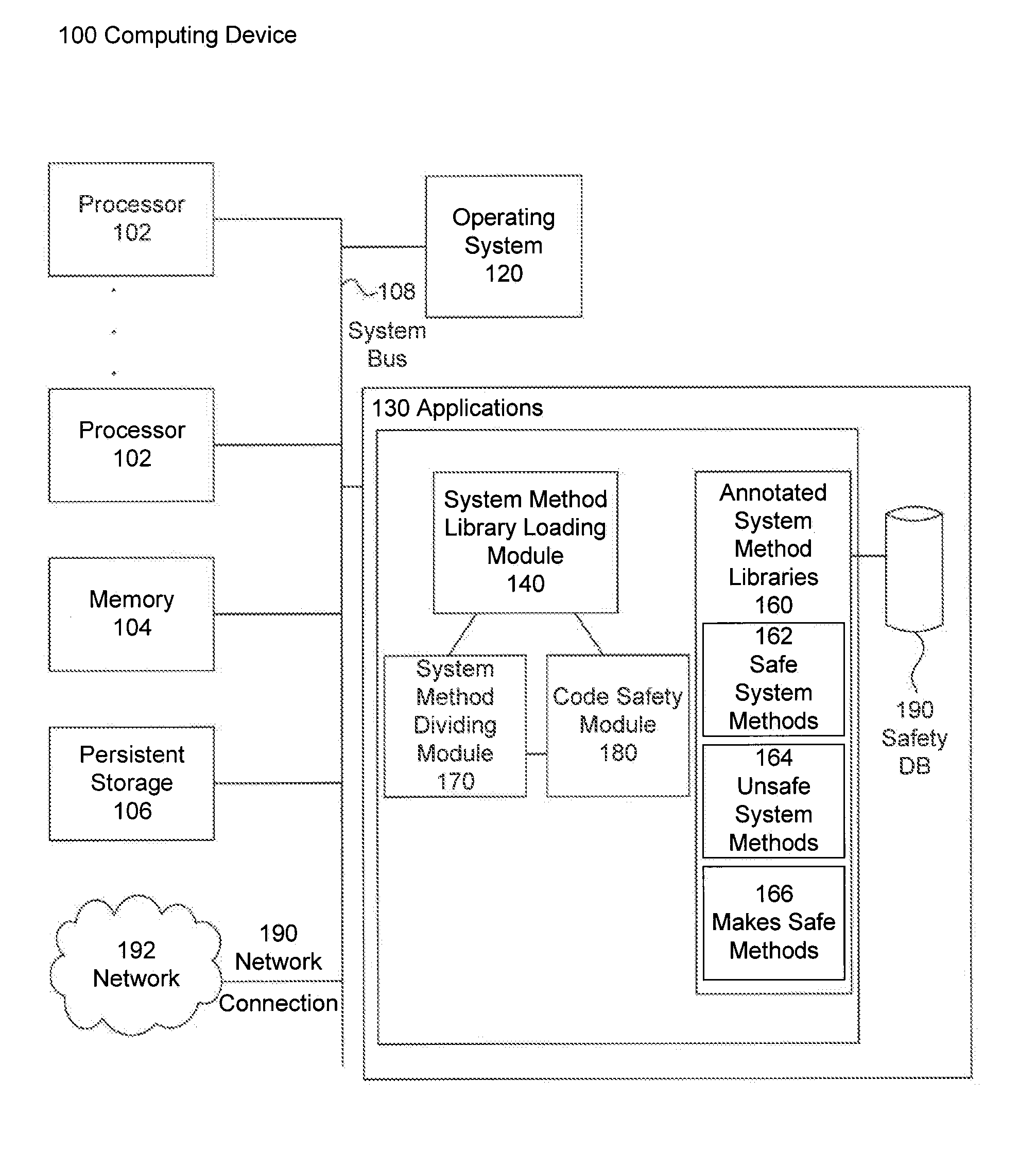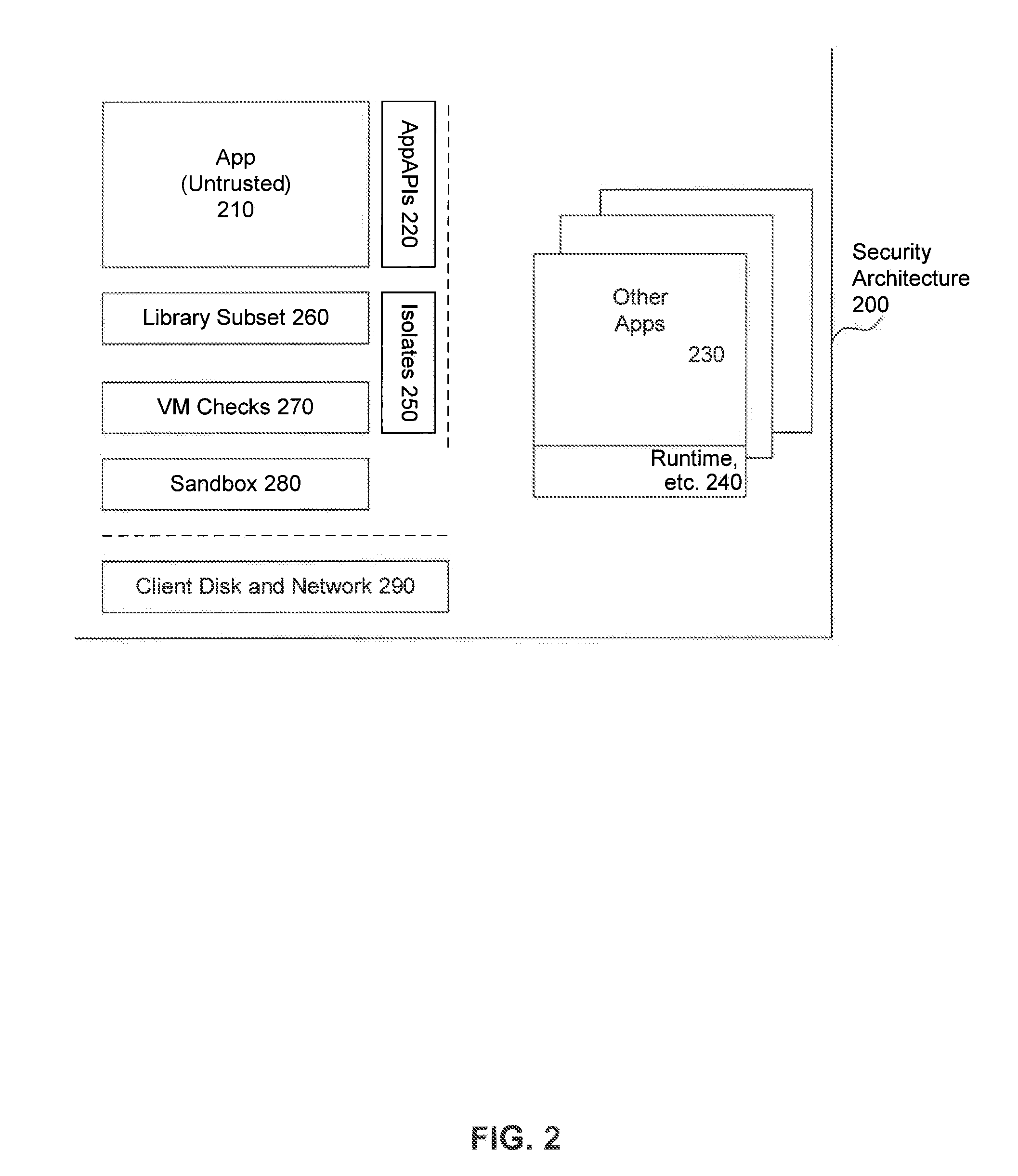Code annotations for preventing access to unsafe functionality
a technology of code annotation and unsafe functionality, applied in the field of computing environment security, can solve the problems of code that could violate the safety properties of the system, and allow unsafe reflection, etc., and achieve the effect of safe execution of user cod
- Summary
- Abstract
- Description
- Claims
- Application Information
AI Technical Summary
Benefits of technology
Problems solved by technology
Method used
Image
Examples
examples
Annotated Code Sample 2
[0071]
@Unsafe({Threat.MEMORY_UNSAFE, Threat.CRASH_PROCESS})private native void foo(int x); / / Asserts x is positive, / / then derefs it@MakesSafe(Threat.CRASH_PROCESS)@Unsafe(Threat.MEMORY_UNSAFE)private void bar(int x) { if (x > 0) foo(x);}@MakesSafe(Threat.MEMORY_UNSAFE)public void bar( ) { bar(this.knownSafeAddress);}
[0072]Inaccessible Classes
[0073]Another use of annotations in the embodiments is to keep track of classes that have public unsafe methods, such as sum.misc.Unsafe.
[0074]@Inaccessible—Classes with unsafe public methods that are hidden from user classes
[0075]@PreventsAccess—Methods that expose @Inaccessible class instances, but only to system classes
Annotated Code Sample 3
[0076]
package sun.misc;@Inaccessiblepublic class Unsafe { @PreventsAccess public static Unsafe getUnsafe( ) { / / Caller classloader check: only expose to system classes . . .}@Unsafe(Threat.MEMORY_UNSAFE)public void putObject(Object object, long fieldO...
PUM
 Login to View More
Login to View More Abstract
Description
Claims
Application Information
 Login to View More
Login to View More - R&D
- Intellectual Property
- Life Sciences
- Materials
- Tech Scout
- Unparalleled Data Quality
- Higher Quality Content
- 60% Fewer Hallucinations
Browse by: Latest US Patents, China's latest patents, Technical Efficacy Thesaurus, Application Domain, Technology Topic, Popular Technical Reports.
© 2025 PatSnap. All rights reserved.Legal|Privacy policy|Modern Slavery Act Transparency Statement|Sitemap|About US| Contact US: help@patsnap.com



